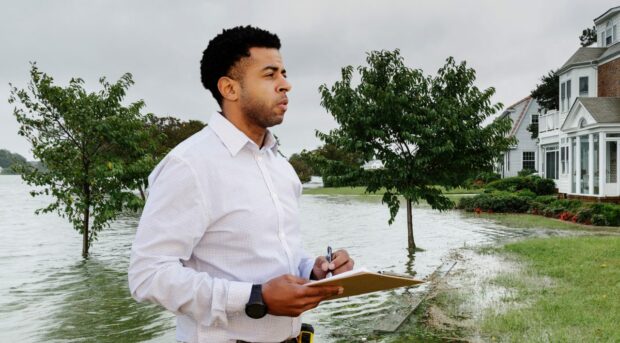Home insurance policies are critical and when disaster strikes, homeowners look to their policy provider for support. Isn’t that what insurance is for? Yes – and no. Homeowners insurance is not a catch-all policy and each policy is a bit different. And because every policy features certain exclusions, and it’s important to be familiar with what your homeowners insurance policy covers before disaster strikes, and protect your home against what it doesn’t.

Old Homes Suffer
Home insurance policies are very specific about what they don’t cover, but despite these specifications, many homeowners don’t read their policies very closely – and this can leave older homes vulnerable. If a tree falls on your roof during a storm, for example, but it was an aging roof on an aging home, you may be subject to actual cash value roof coverage. That means that your insurance company might not pay to repair your roof, since they would be paying to replace something old and worn out with something new.
Instead of relying on your insurance to cover roof damage from a natural disaster, it’s better to take time to secure your roof and protect it from damage in the first place. Some steps you can take include securing your chimney against collapse by installing a steel brace around it and replacing your roof with metal, which will protect against both leaks and fires.
Water, Water Everywhere
One of the most common questions homeowners have about their insurance coverage is whether their policy covers water damage, and whether it does or not depends on the source of the problem. For example, if your pipes burst and cause water damage, your home insurance policy will almost certainly cover the repairs. The personal property aspect of your coverage may even pay for new furniture to replace what was damaged.
Storm-related water damage is far less likely to be covered, but those who live in high-risk areas should take several steps to protect against damage. In particular, it’s important to regularly clear gutters and storm drains, to install permanent storm shutters, and install backflow plugs and valves to prevent sewage from flowing up into your home from overwhelmed municipal systems. Caulking around windows and doors can also prevent water from entering the home.
Know Your Area
In order to properly protect your home against damages during a natural disaster, you need to be familiar with the particular risks to your area and your property. For example, homeowners in earthquake-prone regions should have flexible connections on gas and water lines so that they don’t break when the ground shifts. Those in flood zones, on the other hand, should know where the peak water levels are likely to be on their property and elevate circuits and appliances above that line.
It’s hard to know whether your insurance will cover storm or disaster related damages, which is why the best thing you can do is to simply keep up with standard repairs for wear and tear to make it less likely your home will be damaged and to research other precautions that can protect your property. Though it isn’t always possible, as always the old saying holds: an ounce of prevention is worth a pound of cure, so do what you can to protect your property.
The post Does Homeowners Insurance Cover Natural Disasters? Prevention Is Preferable appeared first on Style Motivation.
Does Homeowners Insurance Cover Natural Disasters? Prevention Is Preferable posted first on http://www.stylemotivation.com
No comments:
Post a Comment